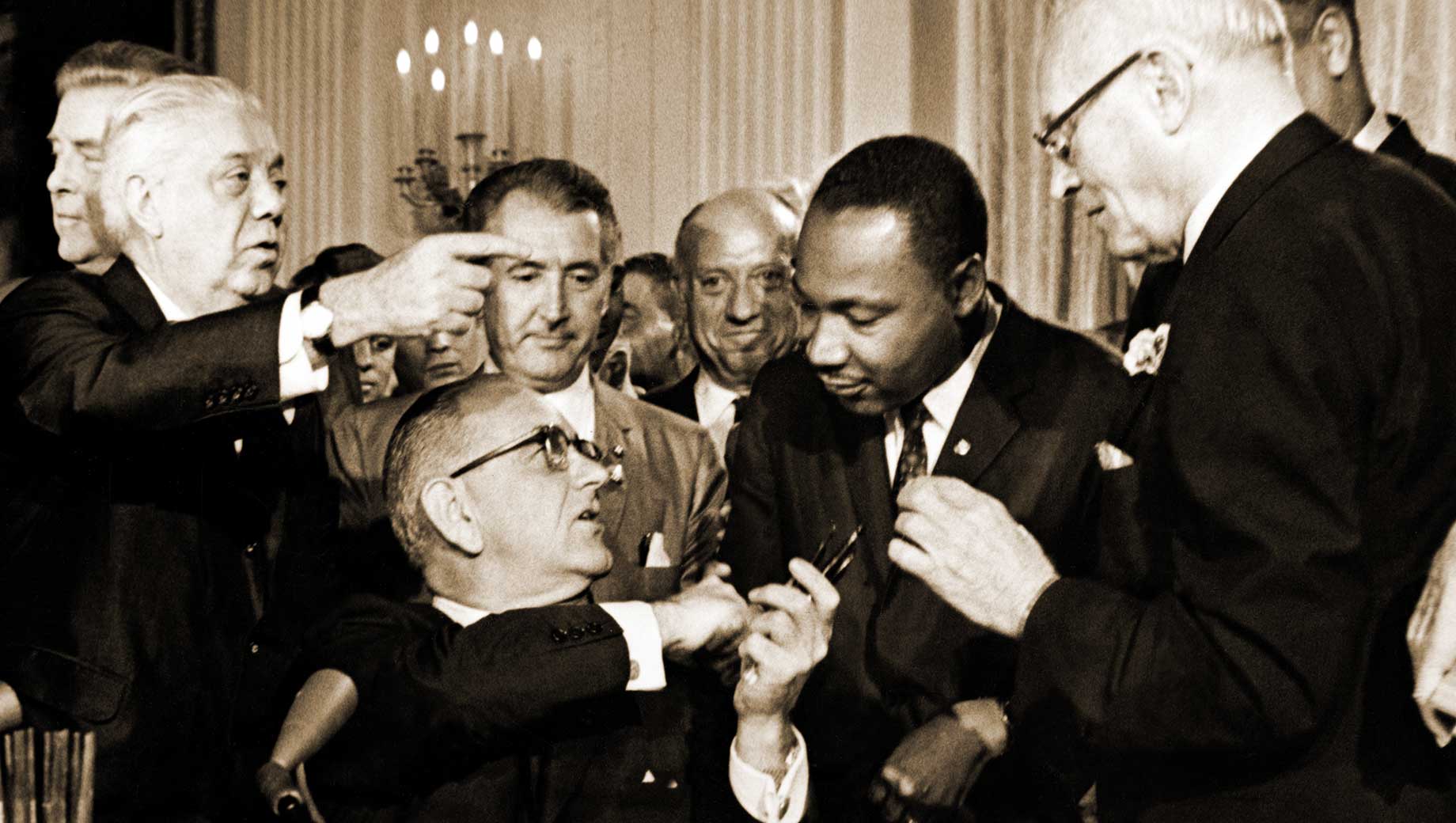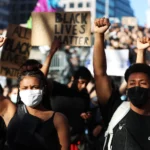The Civil Rights Act of 1964 stands as one of the most significant legislative achievements in American history, marking a pivotal moment in the long struggle for civil rights and equality. This comprehensive overview aims to elucidate the origins, contents, impact, and legacy of the Act, while also answering the top 20 questions commonly asked about this landmark legislation.
Origins and Background
Historical Context
The Civil Rights Movement of the 1950s and early 1960s, characterized by widespread activism against racial discrimination, set the stage for the Civil Rights Act. Key events, including the Montgomery Bus Boycott, the March on Washington, and the Birmingham campaign, underscored the urgent need for federal action to address systemic inequality.
Legislative Journey
The Civil Rights Act was first proposed by President John F. Kennedy in June 1963, in response to mounting civil rights tensions and protests across the country. After Kennedy’s assassination, President Lyndon B. Johnson made the Act’s passage a top priority, employing his political skill to navigate the bill through a deeply divided Congress.
Key Provisions
Title II
Prohibited discrimination in public accommodations, such as hotels, restaurants, and theaters, based on race, color, religion, or national origin.
Title III
Addressed the desegregation of public facilities.
Title IV
Focused on the desegregation of public schools.
Title VI
Prohibited discrimination by government agencies that receive federal funds.
Title VII
Prohibited employment discrimination based on race, color, religion, sex, or national origin and established the Equal Employment Opportunity Commission (EEOC) to enforce these provisions.
Impact and Legacy
Immediate Effects
The Act significantly advanced the cause of civil rights in the United States by providing federal enforcement mechanisms for desegregation and combating racial discrimination. It laid the groundwork for subsequent civil rights legislation, including the Voting Rights Act of 1965 and the Fair Housing Act of 1968.
Long-term Legacy
The Civil Rights Act of 1964 has had a profound and lasting impact on American society, shaping subsequent generations’ understanding of equality, justice, and civil rights. It also catalyzed the expansion of civil rights protections to include other marginalized groups.
The Civil Rights Act of 1964 was the result of the collective efforts of numerous individuals and groups, each contributing in significant ways to its passage. Here’s a look at some of the key figures and their contributions:
Important Figures of The Civil Rights Act of 1964
President John F. Kennedy
- Role: Initiated the push for comprehensive civil rights legislation in his televised address on June 11, 1963, and officially proposed the legislation to Congress.
- Impact: Kennedy’s proposal set the legislative process in motion, though he did not live to see it enacted. His assassination in November 1963 left the task of securing passage to his successor, Lyndon B. Johnson.
President Lyndon B. Johnson
- Role: Utilized his extensive political experience and influence to navigate the Civil Rights Act through a resistant Congress after Kennedy’s assassination.
- Impact: Johnson’s determination and political skill were crucial in the Act’s passage. He signed the bill into law on July 2, 1964, fulfilling Kennedy’s initiative and marking a significant achievement in his presidency.
Martin Luther King Jr. and Civil Rights Leaders
- Role: King, as the most prominent leader of the civil rights movement, along with other leaders like Roy Wilkins (NAACP), Whitney Young (National Urban League), and John Lewis (SNCC), played a critical role in mobilizing public support for civil rights legislation through peaceful protests, marches, and public speaking.
- Impact: Their leadership in the civil rights movement, including the March on Washington for Jobs and Freedom in August 1963, where King delivered his iconic “I Have a Dream” speech, significantly influenced public opinion and political pressure for the Act’s passage.
Members of Congress
Senator Hubert Humphrey (D-MN) and Senator Everett Dirksen (R-IL)
- Role: Humphrey, as the Democratic Whip, and Dirksen, the Republican Minority Leader, were instrumental in securing Senate passage. Humphrey led the floor fight for the bill in the Senate, while Dirksen garnered enough Republican support to overcome a filibuster.
- Impact: Their bipartisan efforts were crucial in breaking the Senate filibuster, one of the longest in U.S. history, ensuring the Act had enough votes for passage.
Civil Rights Organizations
- Role: Organizations such as the National Association for the Advancement of Colored People (NAACP), Southern Christian Leadership Conference (SCLC), Congress of Racial Equality (CORE), and Student Nonviolent Coordinating Committee (SNCC) were deeply involved in advocating for civil rights and the legislation itself.
- Impact: These organizations played a significant role in raising awareness, organizing protests and sit-ins, and lobbying Congress to pass the Civil Rights Act.
Grassroots Activists and the American Public
- Role: Thousands of unnamed individuals participated in the civil rights movement, engaging in protests, voter registration drives, and public demonstrations demanding equal rights and justice.
- Impact: The collective action of grassroots activists and widespread public support created the necessary momentum and moral pressure that led to the Act’s passage.
Attorney General Robert F. Kennedy
- Role: Played a significant part in the formulation and advocacy of the civil rights legislation during his brother’s presidency and continued his support under Johnson.
- Impact: Kennedy’s work included negotiations with Congress and civil rights leaders, helping to shape the bill and its strategic path through the legislative process.
The Civil Rights Act of 1964 was the product of years of effort by a diverse coalition of individuals and groups. Their combined efforts overcame significant political and social obstacles, leading to a landmark law that transformed American society by outlawing discrimination based on race, color, religion, sex, or national origin. The Act’s passage was a major victory for the civil rights movement and set the stage for further legislation aimed at achieving equality and justice for all Americans.
Top 20 Questions About the Civil Rights Act of 1964
- What is the Civil Rights Act of 1964?
- A landmark piece of federal legislation that prohibited discrimination on the basis of race, color, religion, sex, or national origin.
- Why was the Civil Rights Act of 1964 needed?
- To address and outlaw widespread racial segregation and discrimination in public and private sectors.
- Who proposed the Civil Rights Act of 1964?
- It was proposed by President John F. Kennedy and signed into law by President Lyndon B. Johnson.
- When was the Civil Rights Act signed into law?
- July 2, 1964.
- What are the key titles of the Civil Rights Act of 1964?
- The Act is most known for Titles II, IV, VI, and VII, which address public accommodations, school desegregation, federal funding discrimination, and employment discrimination, respectively.
- How did the Civil Rights Act of 1964 impact schools?
- It mandated the desegregation of public schools.
- What was the role of the EEOC?
- The Equal Employment Opportunity Commission was established to enforce the employment provisions of the Act.
- Did the Civil Rights Act of 1964 address voting rights?
- While it included some provisions related to voting, the more comprehensive protections came with the Voting Rights Act of 1965.
- How was the Civil Rights Act of 1964 enforced?
- Through federal enforcement powers, including the Department of Justice and the EEOC.
- Did the Civil Rights Act of 1964 face opposition?
- Yes, it faced significant opposition, particularly from Southern legislators, but also widespread support across the country.
- How did the Civil Rights Act of 1964 affect public accommodations?
- It outlawed discrimination in facilities open to the public, like restaurants and hotels.
- Was gender originally included in the Civil Rights Act of 1964?
- Yes, gender was included as a protected category under Title VII, largely due to efforts by women’s rights advocates.
- How did the Civil Rights Act of 1964 change America?
- It marked a significant step towards equality under the law for all Americans, regardless of race, color, religion, sex, or national origin.
- What preceded the Civil Rights Act of 1964?
- The Civil Rights Movement, including protests, sit-ins, and legal challenges that highlighted the need for federal civil rights legislation.
- What legislation followed the Civil Rights Act of 1964?
- The Voting Rights Act of 1965 and the Fair Housing Act of 1968, among others.
- How did the Civil Rights Act of 1964 impact employment?
- It prohibited employment discrimination and established the EEOC to address complaints.
- What was the significance of Title VI of the Civil Rights Act of 1964?
- It played a critical role in ensuring that federal funds were not used to support discriminatory practices.
- Can the Civil Rights Act of 1964 be amended?
- Yes, it has been amended and expanded over the years to include additional protections.
- How does the Civil Rights Act of 1964 affect us today?
- It continues to influence American society by providing a legal framework against discrimination and shaping ongoing civil rights debates.
- What challenges does the Civil Rights Act of 1964 face today?
- Ongoing issues include enforcement, interpretation, and efforts to address systemic inequality beyond the Act’s original scope.
The Civil Rights Act of 1964 remains a foundational element of America’s legal and moral framework, embodying the nation’s commitment to equality and justice for all its citizens. Its passage was a watershed moment in the civil rights movement, reflecting the culmination of years of activism and struggle. Today, it continues to serve as both a guidepost and a reminder of the ongoing work needed to achieve true equality.





